TEAK
CARE & MAINTENANCE
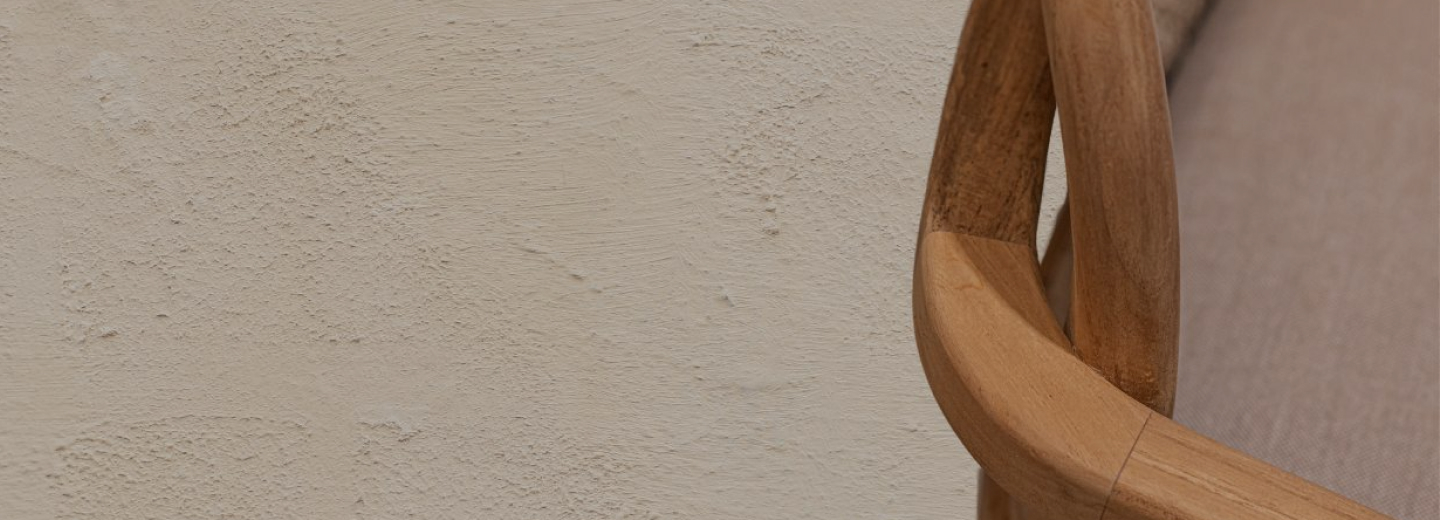
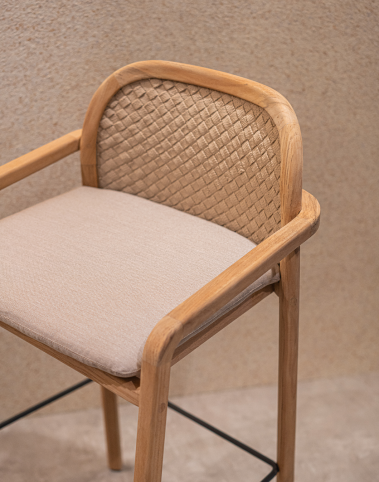
Material Properties
For all the joys of backyard living, it seems one of the only downfalls is dirty outdoor furniture. Keeping your furniture clean can impact the lifespan of your outdoor furniture in a dramatically positive way. Here are some resources and techniques to clean outdoor items ranging from wood, metal, and plastic.
Invest in covers for all your outdoor furniture to prevent bleaching or other damage caused by the sun and rain. This problem can be easily avoided with a waterproof slipcover, plus it makes seasonal cleaning a breeze.
Nevertheless protecting your furniture from the elements, we also recommend that owners clean all outdoor furniture four to five times per year, typically at the start of each season, and twice during the summer. If that sounds like a lot of work, do not start to worry yet. Cleaning patio pieces is much easier than it might seem, and doesn’t require renting a power washer. In fact, we do not recommend using a power washer at all unless the manufacturer specifically indicates a piece is power-washer-friendly; this style of cleaning can damage many materials.
Wood furniture with its varied texture and gorgeous finishes can be cleaned easily. After dusting your furniture with a damp cloth, you can apply a gentle cleanser to give the wood a deep clean with an oil-based cleaner or any DIY wood cleaner that are free of harsh chemicals. During peak-use seasons like spring and summer, wipe down your wood at least once a week with a damp cloth to prevent dirt and dust from impacting the appearance of the materials. If you want to give your wood pieces a new lease on life, you can give it the royal treatment by sanding and staining the piece. This allows you to change the piece if you're updating your color scheme and want lighter or darker wood appearance.
In order to retain the natural, brown origin color of newly purchased teak furniture, it's recommended to apply Teak Sealer immediately after unboxing. This will prevent darkening and maintain its fresh appearance. The sealer should be reapplied once a year and followed by application of Teak Protector to repel moisture and prevent staining.
Teak's natural oiliness makes it unsuitable for painting or varnishing, as any applied substances will not adhere and will eventually peel off. Using teak oil or other wood oils on outdoor teak is also not recommended, as the wood already contains enough oil and additional oil won't provide added protection. Regular oiling can lead to mildew formation and cause the teak to darken, which can only be remedied through intensive sanding.
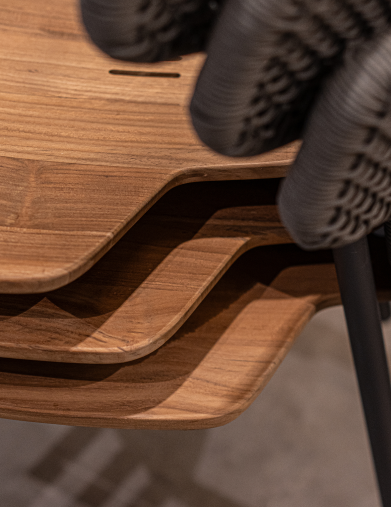
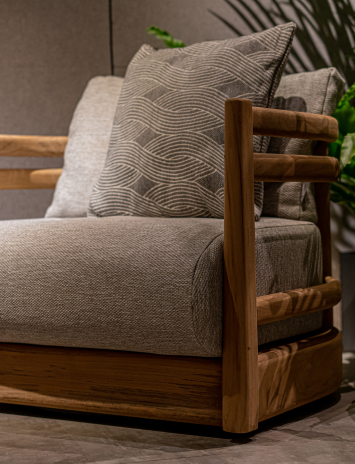
Otazen teak is dried to specific moisture content according to industrial standard. Despite being dry, the wood can still absorb moisture, leading to changes in its size. This is due to the wood expanding and contracting in response to temperature and humidity changes, which are more pronounced outdoors. To minimize this impact, outdoor furniture is often designed with slats instead of wide boards. However, it's not possible to completely eliminate movement. If storing the furniture over the winter, it's best to keep it in a dry shed or garage, but it should not be moved directly from the garden to a heated indoor room, as the sudden change in temperature and humidity can cause excessive movement and result in splitting.
The presence of oil on the surface of teak furniture is a normal occurrence, as the natural oils in teak make it ideal for outdoor use and a high oil content is a sign of high-quality teak. These oils are crucial in allowing the timber to withstand outdoor temperature and humidity fluctuations. During the first few rain exposures, the oils and pigments on the surface of the teak may start to wash out, but this is a natural process and the "bleeding" will gradually decrease over a period of 2-3 months, depending on the surrounding environment.
For the first few months after purchasing new teak furniture, it's advisable not to place it on light-colored, porous stone patios or leave light-colored cushions near it during wet weather. During this period, the teak will have a higher amount of oil that may cause staining on surfaces and fabrics. In the case of stained cushions or fabrics, Upholstery Cleaner is recommended or for persistent stains, oil-based cleaner can be used to clean the fabric.
Teak Oil Leak
Be aware that oil leakage can occur in outdoor furniture made from teak wood, please take preventive measures to protect your furniture.
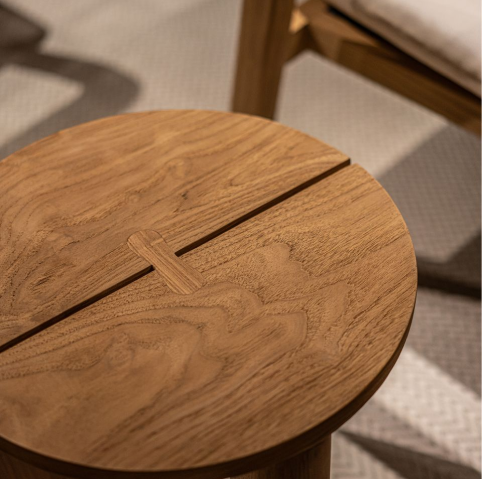
How To Prevent Teak Oil Leaks on Cushion
- After opening the packaging, we recommend thoroughly checking all sides of the furniture to search for any leaked teak oil.
- If you find leaked teak oil, do not put your cushions and the furniture together for a while.
- Put your furniture outside and let the leaked teak oil dry for at least 24-48 hours, but the time it takes for it to stop leaking can vary depending on several factors such as the environmental conditions.
- After the leaked teak oil has dried, you can put the cushion back without worry
Cleaning Teak & Upholstery
- Wear eye protection and rubber gloves before cleaning.
- Place a protective covering on the ground beneath the working area.
- Soak the surface to be cleaned with clean water.
- Apply the cleaner on the stained area, and let it sit according to the label instructions.
- Scrub the dirt and grease with the scrubbing pad provided with the cleaner.
- Rinse the treated surface thoroughly with clean water and let it air dry.
Protecting Teak & Upholstery
- Wear eye protection and rubber gloves before protecting teak and upholstery.
- Place a protective covering on the ground beneath the working area.
- For new teak, weathered teak, and dirty teak, use cleaner to remove natural oils and all stains.
- Allow it to dry completely.
- Use protector to protecting teak and upholstery according to the label instructions.
- It is recommended to reapply the treatment once a year (twice a year for teak table tops).
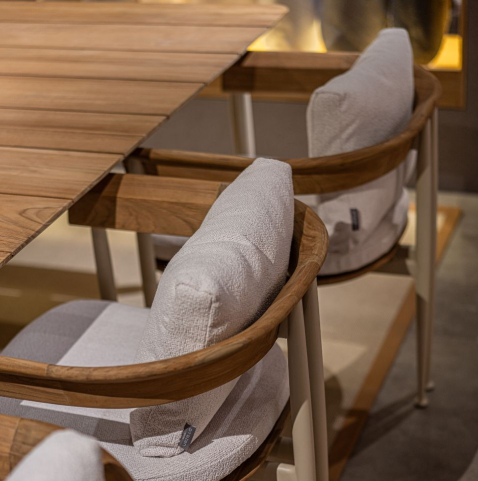
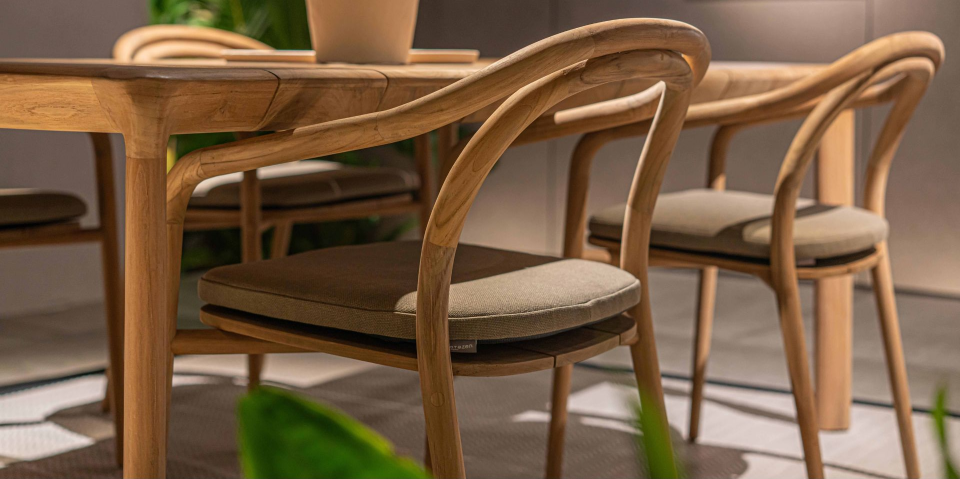
Sealing Teak Wood
- Wear eye protection and rubber gloves before sealing.
- Place a protective covering on the ground beneath the working area.
- For new teak, weathered teak, and dirty teak, use cleaner to remove natural oils and all stains.
- If the cleaned wood feels rough, lightly sand it before treatment.
- Ensure the wood is completely dry and free of dust before sealing.
- Use sealer to sealing teak wood according to the label instructions.
- Re-treat the teak at least once a year.
Do’s and Do Not’s of Teak Care
- Do clean teak gently using water and mild soap for routine maintenance.
- Do clean using a cloth, sponge or soft brush for cleaning.
- Do use Teak & Upholstery Cleaner annually for optimal results.
- Do use the abrasive paper provided to eliminate surface scratches or marks that cannot be cleaned otherwise.
- Do always sand in the direction of the grain, never against it.
- Do use cleaner that is biodegradable and phosphate free.
- Do not use a pressure washer on the teak furniture.
- Do not use stiff brushes, wire brushes or steel wool as they may damage the soft part of the grain, create an unwanted textured surface, and cause rust stains on the teak.
- Do not use bleach as this will discolor the wood.
- Do not use cleaner that doesn’t contain any ammonia or bleach.
